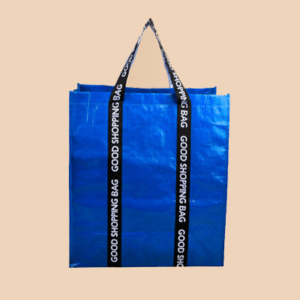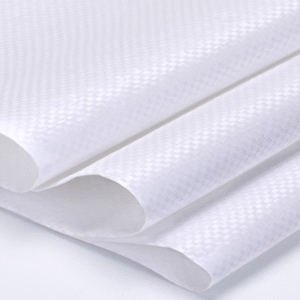PP woven fabric (polypropylene woven material) is a durable plastic textile made primarily from polypropylene (PP) fibers. It is produced by extruding PP into flat yarns (tapes), which are then woven together in a crisscross pattern (similar to traditional weaving). Known for its high strength, abrasion resistance, and UV stability (in modified variants), it is widely used in packaging, construction, agriculture, and industrial applications.


1. Key Characteristics of PP Woven Fabric
✅ High Tensile Strength – More tear-resistant than plastic films, ideal for heavy-duty packaging.
✅ Chemical Resistance – Withstands acids, alkalis, salts, and most solvents.
✅ Lightweight & Flexible – Easy to fold, transport, and reuse.
✅ Waterproof & Moisture-Resistant – PP is inherently hydrophobic.
✅ Customizable – Can be modified with UV stabilizers, flame retardants, or colorants.
❌ Low Heat Resistance – Typically withstands temperatures up to 80°C (may deform under higher heat).
2. Manufacturing Process
- Raw Material Mixing – PP pellets + additives (e.g., UV inhibitors, color masterbatches).
- Extrusion – PP is melted and extruded into thin films.
- Tape Production – Films are slit into flat yarns (typically 0.5–5 mm wide).
- Weaving – Yarns are woven on circular or flat looms to form fabric.
- Lamination/Coating (Optional) – Some products are coated with PE for enhanced waterproofing.
3. Common Applications
(1) Packaging
- FIBCs (Bulk Bags) – For transporting grains, chemicals, and construction materials.
- Woven Sacks – Rice, fertilizer, animal feed and tote bags.
- Mesh Bags – Ventilated packaging for produce (e.g., onions, potatoes).
(2) Construction & Engineering
- Geotextiles – Soil stabilization, erosion control, and drainage systems.
- Tarpaulins – Dust covers for construction sites and mining areas.
(3) Agriculture
- Shade Nets/Insect Screens – Light control and pest protection for crops.
- Greenhouse Thermal Blankets – Insulation for plant nurseries.
(4) Other Uses
- Household Items – Storage baskets, floor mats.
- Industrial Materials – Filtration screens, safety fencing.
4. Environmental Impact
- Recyclable – Can be washed/reused or melted for pelletizing.
- Biodegradability – Standard PP degrades slowly; modified versions (e.g., oxo-degradable) improve sustainability.
- Eco-Advantage – More durable than jute bags, more waterproof than paper, and less polluting than single-use plastics.
